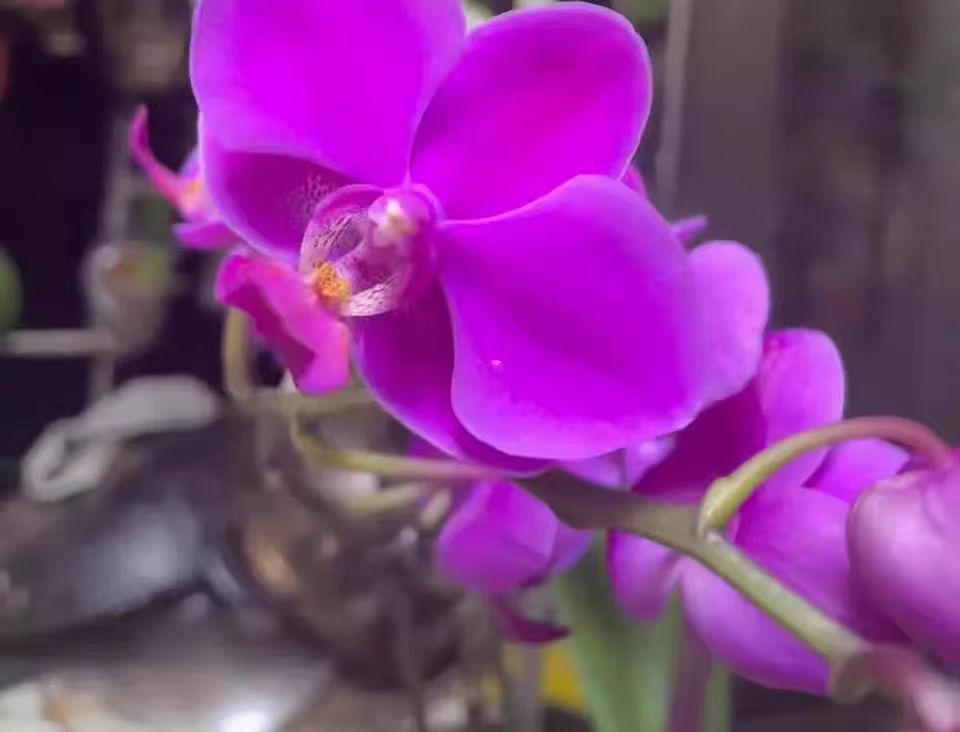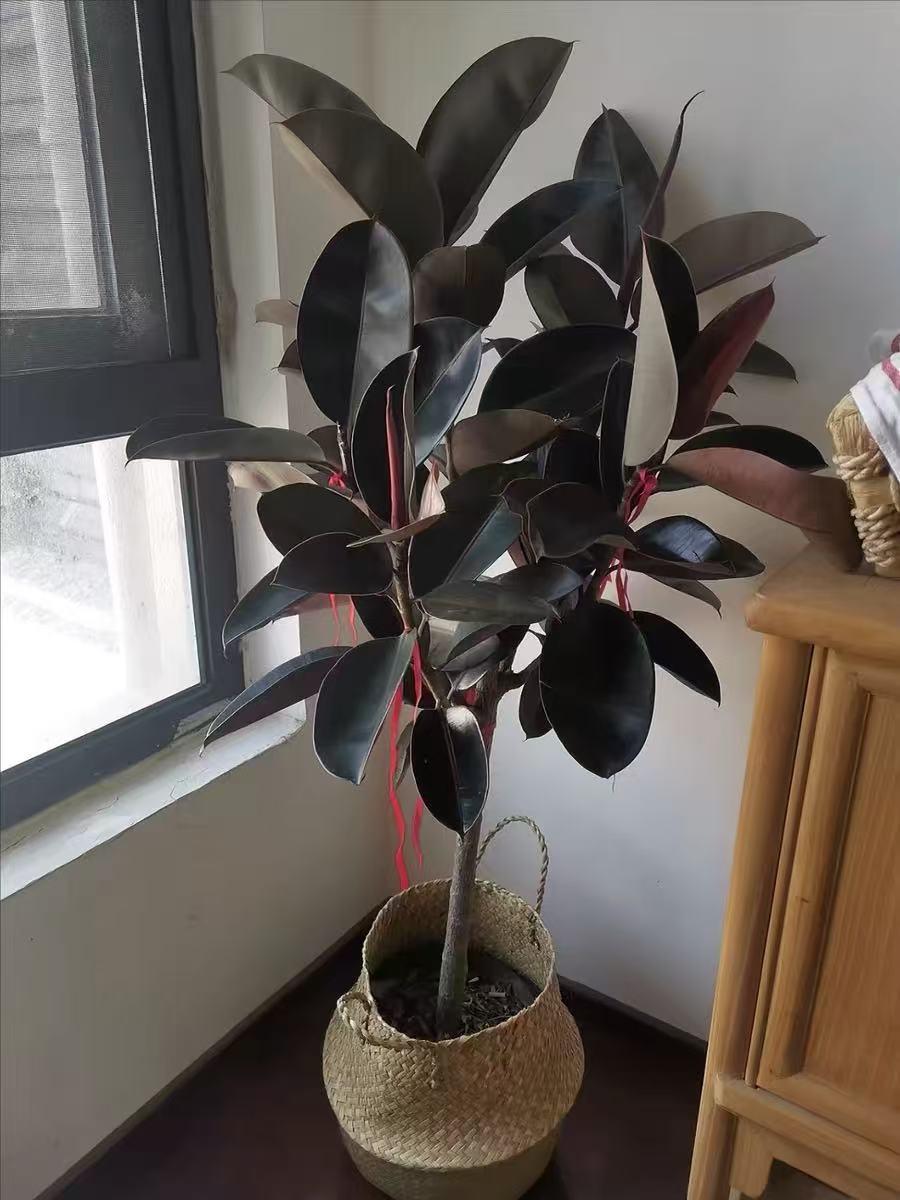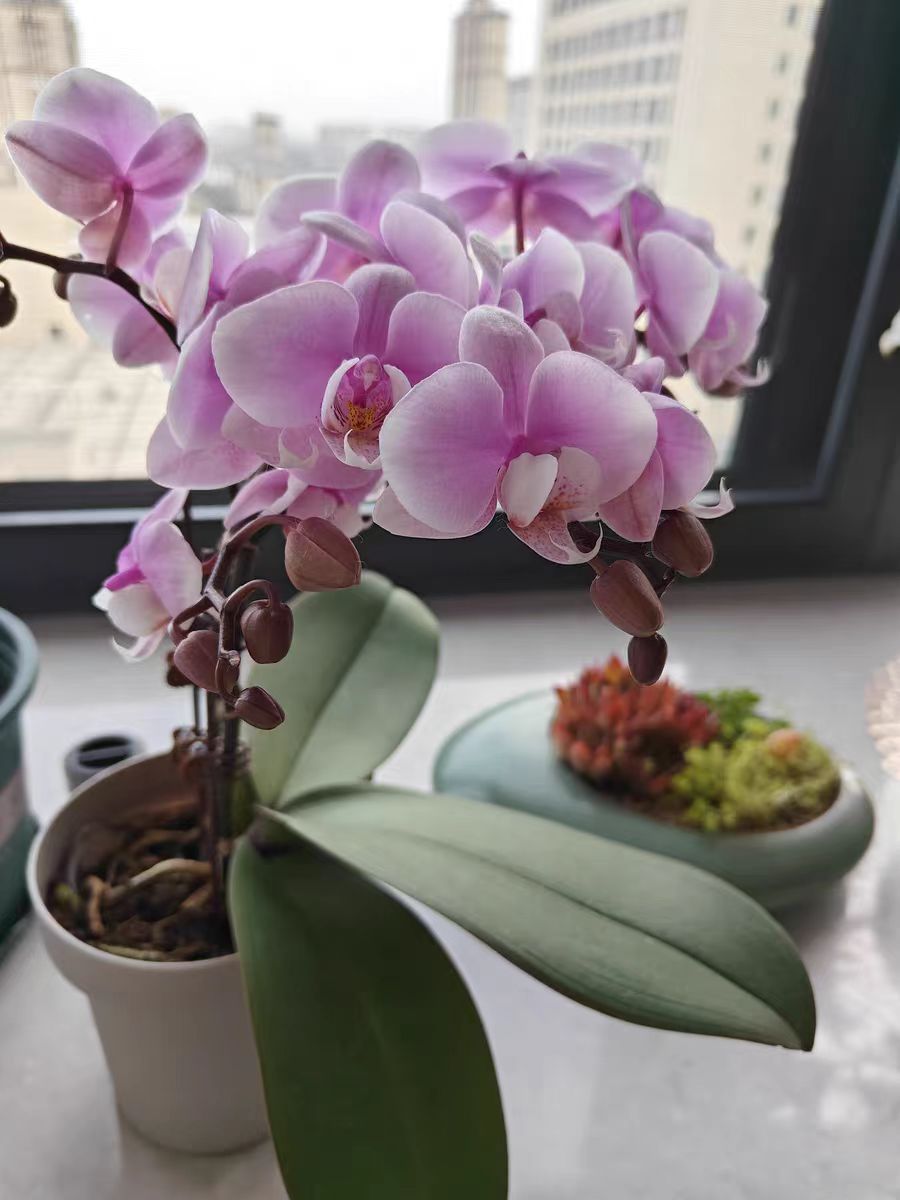During the process of cultivating Phalaenopsis orchids, waterlogging in the roots is an issue that cannot be ignored. Waterlogging not only affects the normal growth of Phalaenopsis orchids, but in severe cases, it can also lead to root rot and even the death of the plant. So, how can we prevent waterlogging in the roots of Phalaenopsis orchids and handle it properly when waterlogging occurs?
Methods to Prevent Waterlogging in the Roots of Phalaenopsis Orchids
Precise Water Control:
Watering Principle: Master the "water when the soil is dry and keep it slightly moist" principle, that is, water the plant after the surface of the potting soil is slightly dry, and ensure that each watering is appropriate in amount and thoroughly soaks the soil. Avoid frequent watering when the potting soil is not completely dry to prevent waterlogging.
Watering Time: It is best to water in the morning or evening when the temperature is relatively low and the water evaporates slowly, which is beneficial for the plant to absorb water. Avoid watering at noon when the sunlight is strong, as it may cause the water to evaporate too quickly and affect the plant's water absorption.
Optimize the Structure of the Potting Soil:
Selection of Potting Soil: Choose loose, breathable, and well-drained soil as the cultivation medium. An appropriate amount of granular substances such as perlite and vermiculite can be added to improve air permeability and drainage.
Regular Soil Loosening: Regularly turn over the potting soil to maintain a good soil structure, prevent soil compaction, and avoid affecting the drainage performance.
Keep the Drainage Holes Unobstructed:
Check the Drainage Holes: Ensure that the drainage holes at the bottom of the flower pot are unobstructed. Gently shake the flower pot after watering to promote the drainage of excess water.
Regular Cleaning: Regularly check whether the drainage holes are blocked by debris and clean them in a timely manner to keep them unobstructed.
Set Up a Drainage Layer: Place a layer of ceramsite or broken tiles at the bottom of the flower pot as a drainage layer to further prevent waterlogging.
Maintain Good Ventilation:
Environmental Selection: Place the Phalaenopsis orchid in a well-ventilated environment, which helps reduce the accumulation of moisture in the potting soil and lowers the risk of pathogen growth.
Avoid Enclosed Spaces: Avoid placing the Phalaenopsis orchid in an enclosed space to prevent poor air circulation and the accumulation of moisture.
Methods to Handle Waterlogging in the Roots of Phalaenopsis Orchids:
Regular Inspection: Regularly check whether there is waterlogging at the bottom of the flower pot. Once waterlogging is found, immediately take measures to deal with it.
Observe the Plant's Condition: Observe the growth condition of the Phalaenopsis orchid. If abnormal situations such as wilting leaves and root rot are found, immediately check for waterlogging.
Drainage Treatment: Pour out the accumulated water and use paper towels or a dry cloth to absorb the excess water. Tilt the flower pot to let the excess water flow out.
Replace the Potting Soil: If waterlogging causes soil compaction or root rot, immediately replace the potting soil with new soil. Choose loose, breathable, and well-drained soil for replanting.
Check the Roots: Gently pull out the Phalaenopsis orchid and check whether the roots are rotten. If any rotten roots are found, trim them off immediately.
Disinfection Treatment: After trimming, soak the roots in a solution of carbendazim or potassium permanganate for disinfection to prevent pathogen infection.
Replanting: Replant the treated Phalaenopsis orchid in new potting soil and place it in a well-ventilated environment for cultivation.
Water Control: After replanting, strictly control the watering, follow the "water when the soil is dry and keep it slightly moist" principle, and avoid waterlogging again.
In conclusion, preventing waterlogging in the roots of Phalaenopsis orchids is a crucial part of the cultivation process. By taking measures such as precise water control, optimizing the potting soil structure, keeping the drainage holes unobstructed, and maintaining good ventilation, we can effectively reduce the risk of waterlogging. At the same time, when waterlogging occurs, taking timely measures to deal with it can also save the life of the Phalaenopsis orchid to the greatest extent.
How to Prevent Waterlogging in the Roots of Phalaenopsis Orchids?

Share with
Tagged in :




Leave a Reply